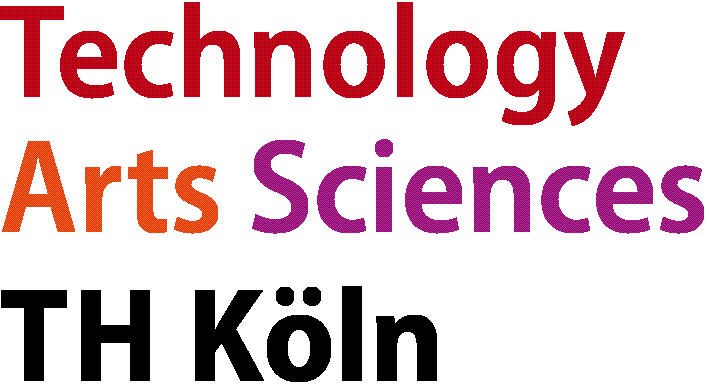
|
|
Qualification aims
The module makes students familiar with concepts, architectures and technologies of industrial communications. The module covers the full range of communication from real-time Ethernet networks to internet-based applications and remote access scenarios. The module emphasises on protocols and software and as well as on network infrastructure devices.
Students can
- evaluate, plan and configure industrial communication systems
- evaluate, plan and configure industrial IT/IoT systems
- evaluate, plan and configure industrial IT-security systems
by
- understanding the principles of real-time Ethernet solutions and their applications in Automation including e.g. TSN, PROFINET and OPC UA
- understanding the difference of horizontal and vertical communication
- gaining detailed knowledge and experience in PROFINET regarding concept, engineering, diagnosis and maintenance
- understanding the requirements and functionality of network devices and controllers
- analyzing and evaluating network traffic in real-time applications by means of tools
- installing and configuring network devices
- planning and commissioning of network installations
- understanding connectivity architectures, current technologies and protocols for Industrial Internet of Things (IIoT)
- understanding the special prerequisites of industrial IT technologies vs. office environments
- evaluating the pros and cons of various protocols
- understanding industrial security objectives (availability, integrity, confidentiality)
- analyzing security objectives in IT and industrial automation scenarios
- comprehending international security standards for automation such as IEC 62443 or VDI 2182
- understanding the roles of vendors, system integrators and asset owners (end users)
- determining and evaluating system security vulnerabilities
- understanding and applying risk analysis methods to develop and evaluate measures
- evaluating typical threats, risks and measures in industrial automation scenarios
- developing methods to determine vulnerabilities
- understand encryption methodology incl. signatures
- estimating security tool limitations
- understanding, planning and configuring firewall technology
- summarizing results in reports
- presenting results in oral presentations
to
- be able to design, manage and maintain industrial automation systems
- be qualified for a professional career as automation engineer
Courses
The module consists of three courses:
Industrial Communication
|
|
Tutor |
Prof. Klasen |
Credit points |
3 CP |
Term |
Fall |
Contents
- Ethernet-based industrial communication (focus on PROFINET)
- Network analysis of real-time Ethernet networks
- Network devices (switches, routers)
- Architecture of plant networks vs. corporate networks
- Integration of plant network and corporate network
- Practical part:
- PROFINET engineering and commissioning workshop
- Configuring network devices
- Designing and configuring PROFINET applications including M2M
Industrial IoT
|
|
Tutor |
Prof. Hackeloeer |
Credit points |
5 CP |
Term |
Fall |
Contents
- Introduction into Industrial IoT and ‘Industrie 4.0’
- Designating factors of industrial IoT applications
- IIoT connectivity, interfaces and protocols, such as MQTT, OPC UA
- Interfacing systems via OPC UA
- Architecture of vertical and horizontal IIoT applications
- IoT platforms and cloud-based systems
- IIoT Semantics and their implementation, e.g. via OPC UA
- Digital twins
- Handling of data
- Principles and terminology of MES (ISA-95)
- Industrial implementation examples, focus on OPC UA and MQTT
IT-Security
|
|
Tutor |
Prof. Hackeloeer |
Credit points |
4 CP |
Term |
Spring |
Contents
- Introduction into basic terms of IT security (security objectives, mechanisms, example scenarios)
- The information security management system – instruments and methods used by management to systematically control (i.e., plan, put in place, implement, monitor, and improve) tasks and activities relating to IT security
- International standards on IT security, e.g. IEC 62443
- Cryptographic procedures as mechanisms to achieve security objectives current cryptographic standards
- Principles and mechanisms of authentication
- TCP/IP based network and service security (weaknesses, attacks, examples)
- Firewall and IPS systems (application level gateways, packet filters, remote access)
- Specific requirements and conditions of industrial automation
- Threads and risk assessment
- Security aspects of Ethernet based automation protocols
- Functional security limitations and interfaces
- Design aspects and typical architectures of secure automation devices and systems
- Vulnerability Test and development of test cases for benchmarks and audits
- Security & Safety
Bibliography
- Klasen, F. et al.; Industrial Communication with Fieldbus and Ethernet VDE Verlag, 2011, ISBN 978-3-8007-3358-3
- Anderson, Ross: Security Engineering, John Wiley & Sons Inc, 2001
- Eckert, Claudia: IT-Sicherheit. Konzepte Verfahren Protokolle, Oldenbourg, 2006
- Schneier, Bruce : Practical Cryptography, John Wiley & Sons, 2003
- Schneier, Bruce : Secrets & Lies. IT-Sicherheit in einer vernetzten Welt, Dpunkt Verlag, 2006
- http://www.securityfocus.com (aktuelle Sicherheitsmeldungen)
- Normen und Richtlinien: Manufacturing and Control Systems Security ISA SP99 VDE/VDI 2182
- Meyer, H., Fuchs, F., Thiel, K.: Manufacturing Execution Systems: Optimal Design, Planning, and Deployment. Mcgraw Hill Book Co, 2009.
- Kletti, H.(Editor): Manufacturing Execution System MES. Springer Berlin Heidelberg, 2010
- Schleipen: Praxishandbuch OPC UA, ISBN 978-3-8343-3413-8
- Lea: Internet of Things for Architects, ISBN 978-1-78847-059-9
- http://mqtt.org/
- https://www.amqp.org/
- IEC 62443 international norm
|
 |

|


![Deutsch version not yet available [ger]](http://www.master-ait.de/common/flag_ger_inactive.gif)
![Englisch [eng]](http://www.master-ait.de/common/flag_eng.gif) Englisch
Englisch